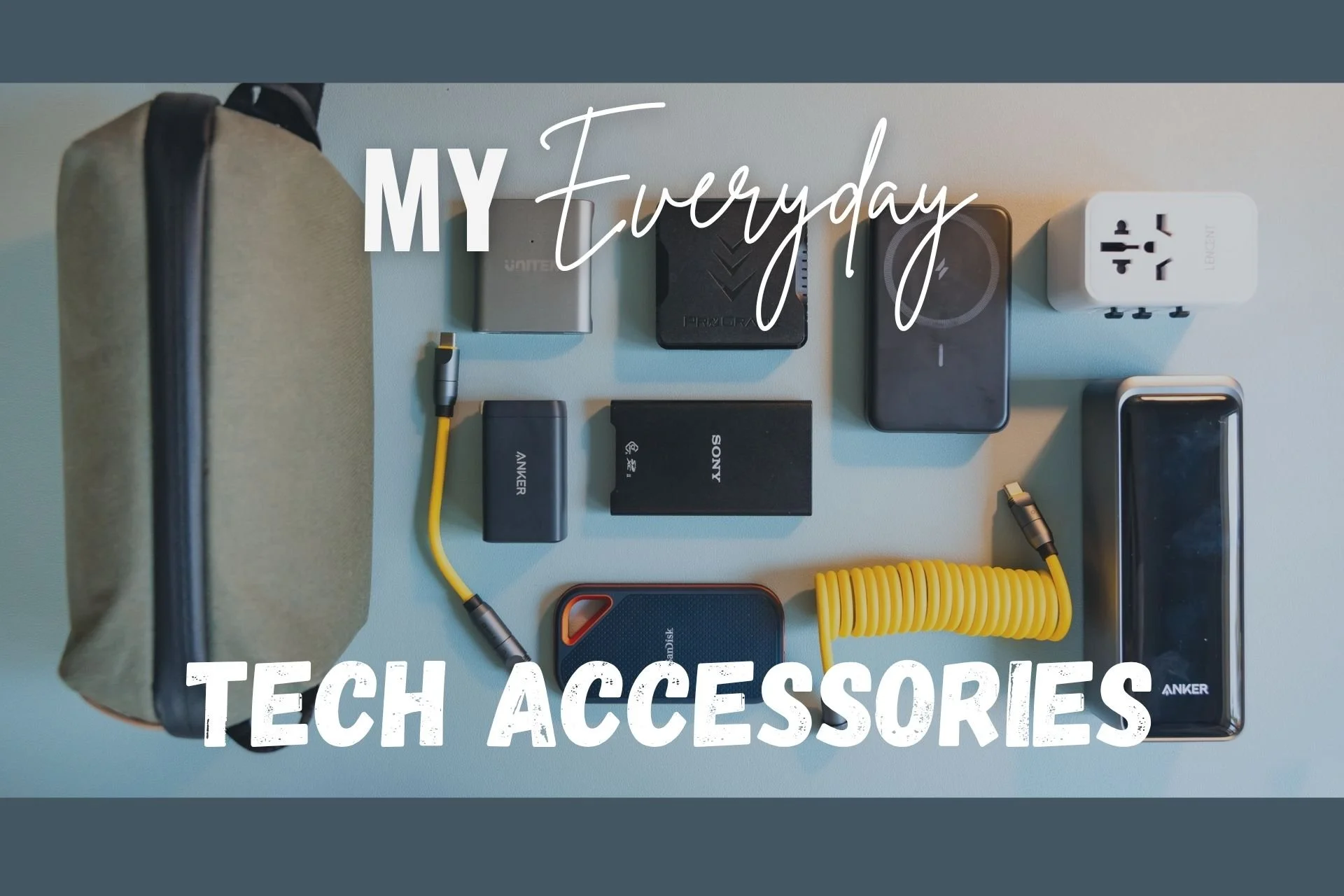10 Steps Workflow & Camera Setting For Best Landscape Photos
I have shared numerous landscape photos on my website and social media, and the camera settings for various pictures.
Although all the settings are different, there's a holistic approach how to create the best landscape photos, which I'd like to share today. Below are typically my 10-step process - of course it doesn't feel like so many steps in the field once you are familiar with your equipment and camera settings. But decomposing these steps is a good exercise. The goal is not to make it a mechanical process, but to show you what you can do to improve your photos efficiently.
1 - Set up tripod
This is typically done after careful research and planning. (see 7 Ways to Maximize Your Chance To Photograph In the Right Place At the Right Time). It's important to:
Set up the tripod in a sturdy place - narrow or spread the tripod legs in order to fix the tripod feet on solid ground instead of sand or mud.
Lower weight if necessary in high wind. Most importantly, set up your tripod where you can help your camera "see" your final image. (See how to select a tripod)
2 - Level your camera
Mount the camera on your tripod. Lots of cameras these days have virtual horizon that shows a line on your LCD screen to help you level your camera. From both of my Canon cameras (5D Mark III and 7D), I half push my shutter button, then press info twice to get to the virtual horizon screen. If your camera is different, refer to your camera manual to see if and how you can see virtual horizon. Alternatively, I could turn on the live view, and press info a number of times to see both my composition and the virtual horizon. The latter is what I personally prefer (although I didn't use live view for a long time).
3 - Frame your composition
Turn on live view (if you haven't done so in the previous step). Make sure the camera is leveled. Adjust the composition as needed by adjusting your ballhead and/or zoom in/out on your lens. For at least 95% occasions, I don’t crop my images in post processing - I’d like to get the composition right directly from the camera instead of relying on cropping in the computer. I am a big fan for efficient workflow. By doing everything correctly in each step, you avoid unnecessary repeat work and can save time in the overall creation process. This requires leveling the horizon at this step in addition to get the right composition.
4 - Focus
Most of the time I compose an image and change the focus point in the camera, instead of focusing first and re-composing the image. (The former method is much more precise than the latter particularly if you shoot in shallow depth of field or your f stop is smaller). I typically focus on the foreground, roughly 1/3 of the way between the closest subject I want to be in focus and infinity.
5 - Take test shot with basic settings
Use Aperture Priority, ISO100, set aperture at least at f/8 or smaller (I typically set between f/11-20). I also turn on the 2 second delayed shutter in order to avoid camera shake caused by pressing the shutter button.
6 - Check histogram
After the first test shot, I always check on the camera histogram to see whether the photo is exposed correctly. For example, if most of the curve chart is located on the left side of histogram, I double or sometimes triple the exposure time. If most of the curve chart is located on the right side of histogram, I reduce the shutter speed accordingly.
Adjust exposure compensation to increase/decrease exposure. There are a number of different ways to adjust exposure but this is the quickest when using a tripod. Take the 2nd or 3rd test shot and check on histogram, until the image is exposed correctly. Note, if most of your image is exposed correctly, but your sky is completely washed out, that means you select the suboptimal time to take landscape photos, or your composition is simply, bad.
7 - Use additional equipment to further improve exposure
Make sure to choose the right equipment. For example:
Before sunset (and sometimes also right after sunset), the sky typically is too bright, I would install a graduated ND filter to cover the sky.
After sunset when the light darkens further (typically at least 15 minutes after sunset), till a point a longer than 30 second shutter speed is needed, I will have to use a shutter release cable (or intervalometer) and use Bulb mode on the camera. I normally install shutter release on the camera at the very beginning instead of waiting till now to do it, because color and light change very fast at this moment (see how colors change within 10 minutes). You might miss some shots if you fumble around your bag and install equipment right now
8 - Get ideal shutter speed:
Depending on the subjects, I’ll adjust the aperture and / or ISO to achieve the ideal shutter speed, even the above steps already give me the perfect exposure.
For example lake, seascape or waterfalls require a bit slower shutter than a mountain shot. So I need to decrease the aperture (ie. increase f stop) to lengthen the exposure time
At some other occasions, for example photographing night scenes, I would increase ISO in order to shorten the exposure time, provided the long exposure effect is not compromised. For instance, photographing light trail of cars could take 30 seconds or 3 minutes (depending on how heavy the traffic is). I can choose a higher ISO for faster shutter speed for heavy traffic in order to save time
Light trail at Big Sur, California
Sometimes getting the right shutter speed involves remixing the following: aperture, ISO, exposure compensation. You need to have a solid understanding how each of these adjustment affect on your image. During the time when colors/light change fast, you want to adjust fast instead of fumbling around. This of course requires practice.
In case I use 10-stop filter (typically for long exposure for seascape), I need to calculate the right shutter speed. I use an iPhone app called ND Timer for shutter speed reference when I use 10-stop filter. In fact, I calculate myself many times – my math is pretty good. Here's a previous post about how to use filters.
9 - Use manual focus
When the light gets really dark, or after mounting the 10-stop filter, sometimes I need to use manual focus. This depends on your camera's sensor. Full frame cameras typically have an immeasurable advantage of focusing in dark light conditions.
10 - Try out other compositions/Locations
Try different composition at the same location and repeat the above steps until I get the ideal shot.
Or try different locations and repeat the above steps until I get the ideal shot.











Choosing between Sony and Canon mirrorless cameras? I reveal why I’ve chosen to use both systems for capturing precious family moments and breathtaking travel photos. You'll discover the top reason I chose each brand and what you should prioritize on when it comes to picking the right camera system.